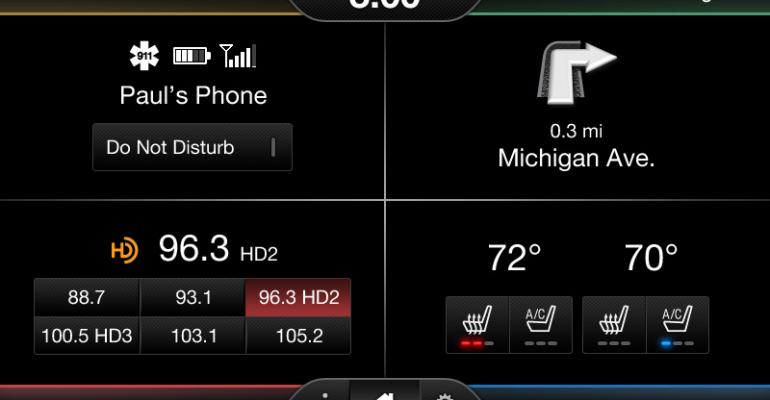DETROIT – U.S. auto makers continue to struggle with striking a balance between giving customers the latest technology and making sure those features have bulletproof quality, a closely watched study on the topic reveals.
“Almost no manufacturer has solved the riddle,” says Dave Sargent, vice president-global automotive research at Westlake Village, CA-based J.D. Power & Associates and author of the consultancy’s annual Initial Quality Study.
“It is a collective learning experience the industry is going through,” Sargent tells the Automotive Press Assn. here today after releasing the study’s most recent findings.
Ford has garnered the lion’s share of negative publicity regarding its MyFord Touch communication and entertainment system.
The auto maker launched the cutting-edge technology in 2010, but customer complaints over its complexity and unreliability compelled it to revamp the system for ’13 models with simpler graphics, faster touchscreen response and easier-to-use controls.
However, the problems dinged Ford’s initial quality, sinking its historically strong showing in the study. This year, the auto maker’s initial quality declines again.
Scoring high in the industry study, which polls some 75,000 car buyers after their first 90 days of ownership, matters, Sargent says. Throughout the study’s 26 years, nameplates finishing in the top 25% see 54% of owners returning to the brand for another vehicle. Just 37% return to lesser-performing nameplates.
The good news this year is that Sargent likes the fixes Ford has made, which were released after the study was completed. “From what we’ve seen, it’s a whole lot better,” he says, noting it still will “take a while” for Ford to climb back into the study’s top ranks.
This year’s best-performing nameplates, in descending order, are Lexus, Jaguar, Porsche, Cadillac, Honda, Acura, Infiniti, Toyota, Mercedes-Benz and BMW.
Jaguar gains the most ground, having ironed out issues with its newly launched XJ. The Porsche 911 ranks as the best-performing vehicle in the study, and according to Sargent, probably is the highest-quality car in the study’s 26-year history.
Chrysler loses ground after making recent quality strides, dragged down by the launch of the Chrysler 300 large sedan. Sargent says auto makers launching numerous vehicles in a single year, or redoing one of their top sellers, such as Chrysler has, often run into initial-quality issues.
Blame new audio, infotainment and navigation systems, where technology has been evolving rapidly, but auto makers cannot keep quality high.
According to the latest study, 16% of all reported problems center on those systems, which for the first time overtakes exterior issues such as rusting as the No.1 item of complaint in a year when new vehicles are more reliable than ever.
Sargent says the industry nearly has perfected the ability to remedy mechanical complaints, such as a poorly shifting transmission, but remains behind the curve on quickly making fixes to emerging technologies.
Don’t blame older car buyers, Sargent offers. Customers aged 35 and younger report twice as many problems with new technology as those 55 and older. “It isn’t a problem of old guys like us who can’t figure out newfangled technology,” he says.
Rather, younger buyers spend more time using emerging technology, so their expectations are higher. Plus, older consumers might use the high-tech systems.
There also might be issues with the study, which gives owners just 90 days to learn their car’s new technology. “A lot of people complaining about the technology are giving it a go for the first time,” Sargent admits.
He hopes taking the survey online next year, instead of using direct mail as has been the practice, will provide more accurate responses by vehicle owners, because J.D. Power will be able to ask follow-up questions more quickly.
This year’s study also reveals more complaints from small-car owners, whereas historically large-car buyers have experienced the most problems. Issues center around wind noise, poor performance and flimsy switchgear.
Sargent speculates vehicle quality has become so strong in recent years because the industry is financially healthier, able to throw more dollars at problems than during the recent recession and bankruptcies. New-vehicle launches also are going more smoothly.




